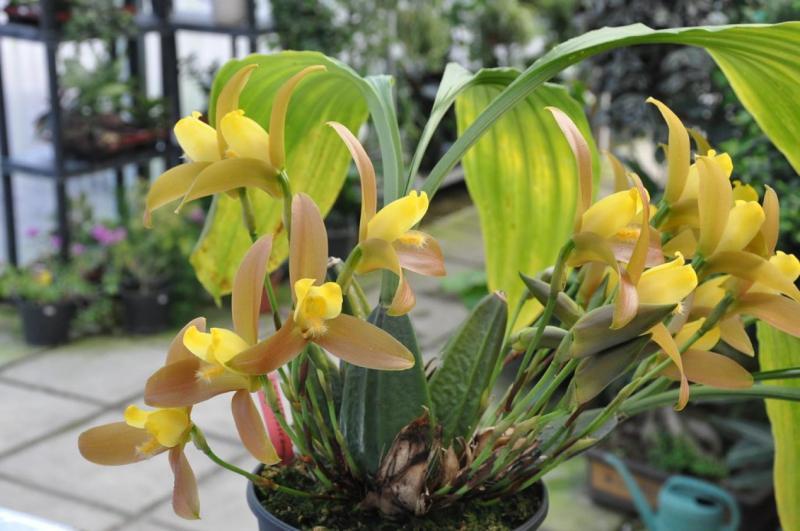Lycaste lasioglossa
Also known as: The Shaggy or Lycaste lasioglossa h.f. alba Lycaste lasioglossa var. flava Lycaste lasioglossa var. melanacra Lycaste lasioglossa var. minor Lycaste macropogon in the subfamily: Epidendroideae
Native to: Chiapas - Mexico Guatemala Honduras
General Information
The Shaggy is a large cool to warm growing epiphytic or terrestrial orchid belonging to the sub family Epidendroideae native to Mexico, Guatemala and Honduras.
Plant Description
Grows to 0.2-60cm. Each new growth has numerous erect elliptic, lance shaped, oblong shaped leaves that grow to 10-70cm long. Pseudobulbs grow to 2.6-8.5cm
Flowers
A single short lasting, fragrant blossom appears
Fragrance
The orchid is fragrant.
Substrate(s)
- Coarse
- Fine
- Bark
- Charcoal
- Spaghnum Moss
- Perlite
Care Notes
These orchids like to be watered regulary, especially during warm weather, and prefer a well draining mix or also do well mounted, provided they can be watered daily or even many times a day.
These are quite a forgiving orchid, there are no special requirements to get this orchid to flower, just good care and consistent conditions. Larger plants may be more fussy and can react poorly to change; a poorly timed repotting, a pest infection or an unusually hot day can set them back for a couple of years. However, even plants that have been treated poorly can thrive, and if they are set back they often recover much stronger then they would otherwise be.
Fragrant:- IsFragrant
Climate
Grows at high elevations. Rainfall ranges from 112mm to 335mm per day, heaviest in October and lightest in March. Humidity ranges from 80% to 87%, highest in July and lowest in February. Temperature ranges from 10C to 25C, highest in April (15C to 25C) and lowest in January (10C to 21C).
Watering
These orchids prefer a wet-dry cycle between waterings, they should be watered frequently but only when the moisture is approaching dryness, where the pot feels light and/or the media looks dry. Keep an eye on mounted orchids in warm weather as they may dehydrate quickly.
Fertiliser
Apply liquid based fertiliser per recommended directions. They can benefit from a high phosphate fertiliser leading up to flowering season, followed by a high nitrogen fertiliser when new growth appears, and a balanced fertiliser in other times. These orchids can also tolerate slow release fertiliser applied 1-2 pellets per cup (250ml) of media.
Use balanced fertiliser during Spring and Summer. Apply fertiliser regularly at half strength year round. Use a high Nitrogen fertiliser during Spring and Summer. Use a high Phosphorous fertiliser during Summer.Potting
This orchid prefers a fine, well draining media. Avoid commercial potting mixes as they may have 'wetting agents' that retain water for too long. A simple mix made up of 20% sand, 50% peat or moss, with the remaining 30% made up of decomposed bark and leaf litter would be adequate. Adding some charcoal to the mix will also help it last longer.
Repotting depends on how wet the media is usually. Every 2-3 years would suffice, or whenever the media shows signs of clumping, staying wet for too long, or smells foul.
Use water retentive media such as moss to prevent roots from drying out quickly This plant does very well in baskets or suspended pots This plant does well mounted to Cork slabs. Repotting is best done annually.




















